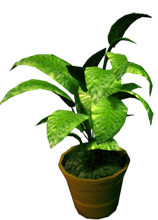Many gardeners make use of the traditional wooden trellis, appreciating its attractive look and useful function. The only problem with using wooden trellises is that because they are so popular, many gardens can end up looking the same.

The function of a trellis
Trellises are very popular because they serve so many uses in the garden. They can obviously be used for training climbing plants, but they can also serve to screen certain areas of the garden that are not attractive enough to be on show such as a compost bin or waste bin area. When several trellises are put together, they can form impressive structures to define areas in the garden and create “garden rooms.” Lastly, they can also serve as barriers against the weather, providing windbreaks around seating areas, and of course, affording privacy.
Plants for trellises
If a trellis is being used for its traditional function of training climbing plants, then there are several plants to consider. Green foliage looks good on trellises, such as Pelargonium, Lonicera, and Senecio, but be aware that some climbing plants can damage others, such as Ivy and Creeping Fig, while others can grow too vigorously, such as Honeysuckle and Jasmine.
Roses make a pretty alternative to foliage and can be trained up a trellis, as can Clematis and Thunbergia. These need sunlight to thrive, so ensure that the trellis is placed in a sunny position.
Unusual trellises
There is a slight problem with using wooden trellises in the garden, in that many of them look the same. Those gardeners who want to inject a little personality into their outdoor spaces may prefer a trellis that is a little more quirky. For example, an iron gate has a similar structure to a wooden trellis, and will perform in the same way. The spring frame from a bed mattress provides a very intricate structure for an unusual trellis.
Alternatives to trellises
Of course, a trellis does not necessarily need to be a solid structure, as climbing plants can be trained to climb up almost any vertical item. Hang chains from a horizontal post or bar and drop them into a pot, attaching them to the side so that they are able to withstand breezes and winds once the plants begin to grow.
Upcycled items from the home can also be utilized and repurposed in the garden. Wooden shutters, can be used to create trellis-style structures in the garden such as an arch or an arbor. Simply nail, screw, or glue them together. Trellises can also be fashioned from bits of metal tubing such as copper. Copper is great for the garden, as over a very short period of time it will acquire a weathered, greenish patina, which will blend in with the garden.
Trellises are invaluable tools for structuring and bringing order to a garden, but this does not mean that gardens which have them need look conventional. With a little bit of lateral thinking, almost any household item or unwanted metal can be reused or fashioned to serve the same purposes as traditional wooden shutters.


















